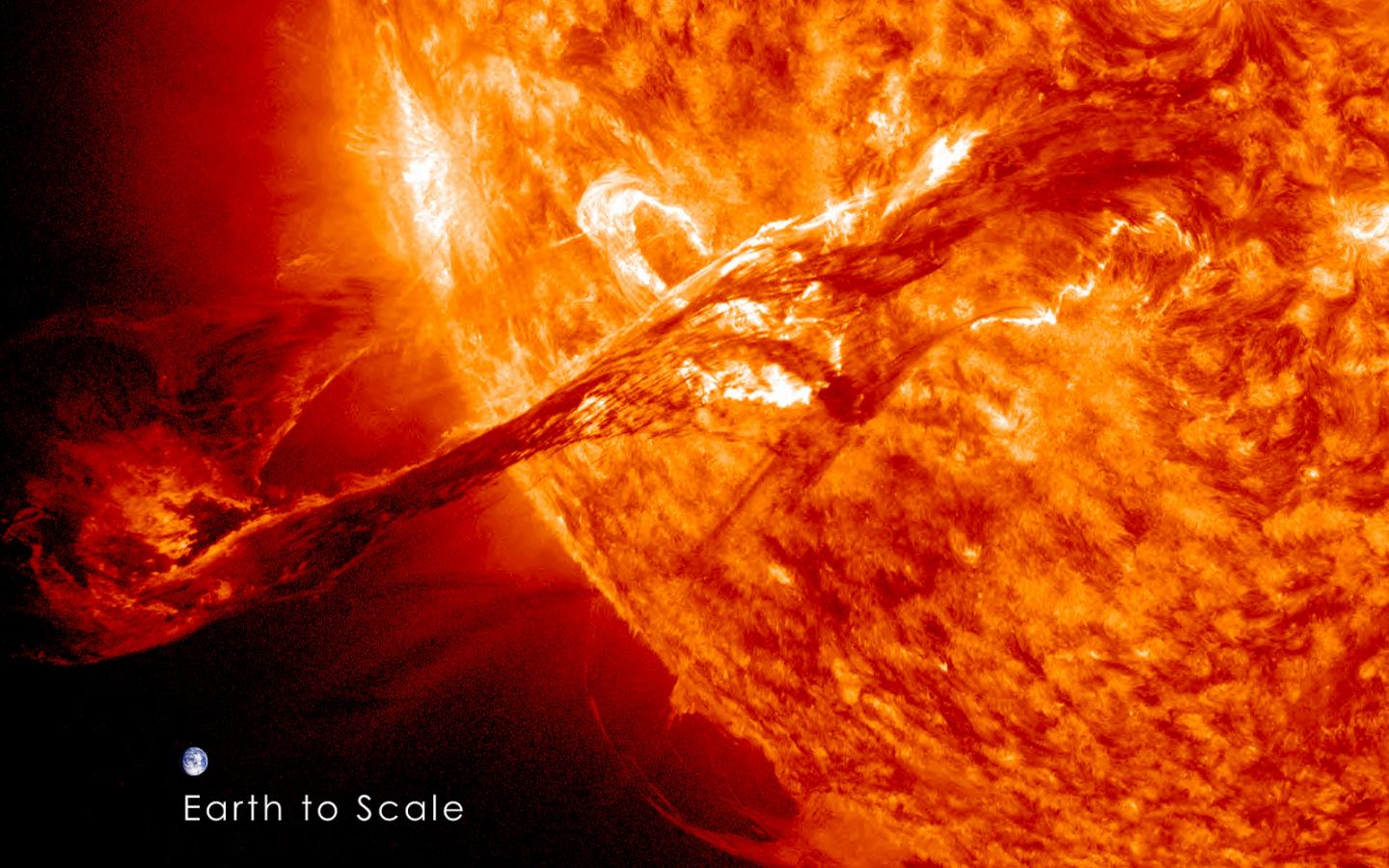
Coronal mass ejections from the sun heat Earth’s upper atmosphere, then cool it dramatically, according to a new University of Colorado Boulder study. Source: NASA
A team led by the University of Colorado Boulder has found the mechanism behind the sudden onset of a “natural thermostat” in Earth’s upper atmosphere that dramatically cools the air after it has been heated by violent solar activity.
Scientists have known that solar flares and coronal mass ejections (CMEs) — which release electrically charged plasma from the sun — can damage satellites, cause power outages on Earth and disrupt GPS service. CMEs are powerful enough to send billions of tons of solar particles screaming toward Earth at more than 1 million miles per hour, said CU Boulder Professor Delores Knipp of the Department of Aerospace Engineering Sciences.
Now, Knipp and her team have determined that when such powerful CMEs come off the sun and speed toward Earth, they create shock waves much like supersonic aircraft create sonic booms. While the shock waves from CMEs pour energy into Earth’s upper atmosphere, puffing it up and heating it, they also cause the formation of the trace chemical nitric oxide, which then rapidly cools and shrinks it, she said.
“What’s new is that we have determined the circumstances under which the upper atmosphere goes into this almost overcooling mode following significant heating,” said Knipp, also a member of CU Boulder’s Colorado Center for Astrodynamics Research. “It’s a bit like having a stuck thermostat — it’s really a case of nature reining itself in.”
Knipp gave a presentation at the 2016 fall meeting of the American Geophysical Union being held in San Francisco Dec. 12 through Dec. 16. The presentation was tied to an upcoming paper that is slated to be published in the journal Space Weather.
Solar storms can cause dramatic change in the temperatures of the upper atmosphere, including the ionosphere, which ranges from about 30 miles in altitude to about 600 miles high — the edge of space. While CME material slamming into Earth’s atmosphere can cause temperature spikes of up to 750 degrees Fahrenheit, the nitric oxide created by the energy infusion can subsequently cool it by about 930 F, said Knipp.
The key to solving the mystery came when Knipp was reviewing satellite data from a severe solar storm that pounded Earth in 1967. “I found a graphic buried deep in a long forgotten manuscript,” she said. “It finally suggested to me what was really happening.”
Because the upper atmosphere expands during CMEs, satellites in low-Earth orbit are forced to move through additional gaseous particles, causing them to experience more drag. Satellite drag — a huge concern of government and aerospace companies — causes decays in the orbits of spacecraft, which subsequently burn up in the atmosphere.
As part of the new study, Knipp and her colleagues compared two 15-year-long satellite datasets. One was from the Sounding of the Atmosphere using Broadband Emission Radiometry (SABER) instrument riding on NASA’s TIMED satellite. The other was from data collected by U.S. Department of Defense satellites.
“We found that the fastest material streaming off the sun was triggering these shockwaves, causing the atmosphere to heave up and heat up,” she said. “But it became very clear that these shock waves were at the root of creating the nitric oxide, which caused the atmosphere to shed energy and cool.”
SABER has been collecting data on nitric oxide in the atmosphere since its launch in 2001, following on the heels of another nitric oxide-measuring satellite known as the Student Nitric Oxide Explorer (SNOE). Launched in 1998, SNOE involved more than 100 CU Boulder students, primarily undergraduates, in its design and construction. Once in orbit, SNOE was controlled by students on campus 24 hours a day for nearly six years.
Geomagnetic storms have had severe impacts on Earth. A 1989 storm caused by a CME resulted in the collapse of the Hydro-Quebec’s electricity transmission system, causing six million Canadians to lose power. In 1859 a solar storm called the Carrington Event produced auroras from the North Pole to Central America and disrupted telegraph communications, even sparking fires at telegraph offices that caused several deaths.




